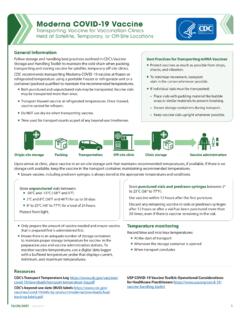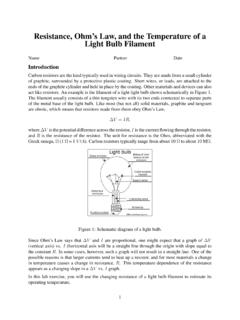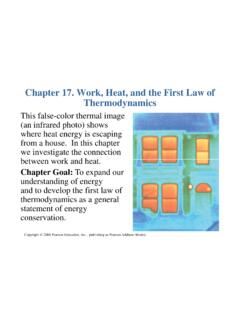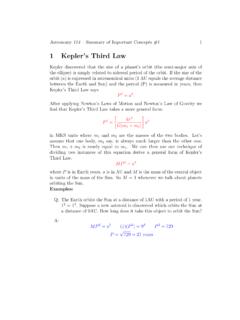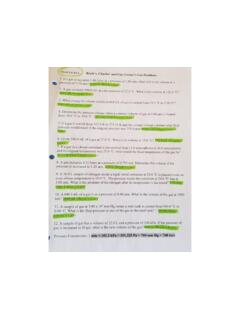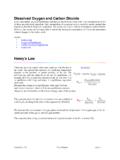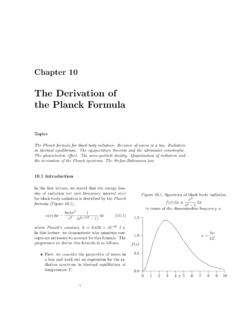Transcription of Combined Gas Law Problems - mmsphyschem.com
1 Combined Gas Law Problems 1) A sample of sulfur dioxide occupies a volume of 652 mL at 40. C and 720 mm Hg. What volume will the sulfur dioxide occupy at STP? 2) A sample of argon has a volume of dm3 and the pressure is atm. If the final temperature is 30. C, the final volume is L, and the final pressure is 800. mm Hg, what was the initial temperature of the argon? 3) 322 L of hydrogen occupies a volume of 197 L at STP. If the initial temperature of the hydrogen was 37 C, what was its initial pressure? 4) The initial temperature of a liter sample of argon is 20. C. The pressure is decreased from 720 mm Hg to 360 mm Hg and the volume increases to liters. What was the change in temperature of the argon?
2 5) A sample of nitrogen gas occupies a volume of L at 756 mm Hg and C. The volume increases by L and the temperature decreases to 137 K. What is the final pressure exerted on the gas? 6) A 20. L container is filled with helium and the pressure is 150 atm and the temperature is 30. C. How many L balloons can be filled when the temperature is 22 C and the atmospheric pressure is 755 mm? Solutions 1) P1 = 720 mm P2 = 760 mm V1 = 652 mL V2 = ? T1 = 40. C + 273 = 313 K T2 = 0 C + 273 = 273 K P1V1/T1 = P2V2/T2 V2 = P1V1/T1 x T2/P2 V2 = 720 mm x 652 mL x 273 K/(313 K x 760 mm) = 540 mL SO2 2) P1 = atm P2 = 800. mm V1 = dm3 V2 = L T1 = ?
3 T2 = 30. C + 273 = 303 K P1V1/T1 = P2V2/T2 T1 = P1V1/P2 x T2/V2 T1 = atm x 760 mm/1 atm x dm3 x 303 K/(800. mm x L x 1 dm3/L) = 232 K = -41 C 3) P1 = ? P2 = atm V1 = 322 L V2 = 197 L T1 = 37 C + 273 = 310 K T2 = 0 C + 273 = 273 K P1V1/T1 = P2V2/T2 P1 = P2V2/T2 x T1/V1 P1 = atm x 197 L x 310 K/(273 K x 322 L) = atm 4) P1 = 720 mm P2 = 360 mm V1 = L V2 = L T1 = 20. C + 273 = 293 K T2 = ? P1V1/T1 = P2V2/T2 T2 = P2V2/P1 x T1/V1 T2 = 360 mm x L x 293 K/(720 mm x L) = 313 K = 40. C 5) P1 = 756 mm P2 = ? V1 = L V2 = L T1 = C + 273 = 273 K T2 = 137 K P1V1/T1 = P2V2/T2 P2 = P1V1/T1 x T2/V2 P2 = 756 mm x L x 137 K/(273 K x L) = 190.
4 Mm Hg 6) P1 = 150 atm P2 = 755 mm V1 = 20. L V2 = ? T1 = 30. C + 273 = 303 K T2 = 22 C + 273 = 295 K P1V1/T1 = P2V2/T2 V2 = P1V1/T1 x T2/P2 P2 = 150 atm x 20. L x 295 K/(303 K x 755 mm x 1 atm/760 mm) = 2940 L # balloons = 1 L x 2940 L = 588 balloons








